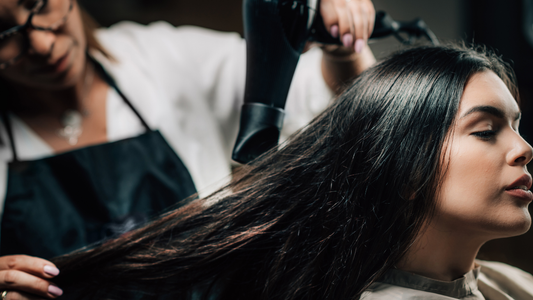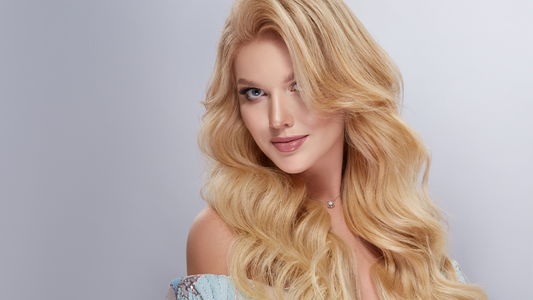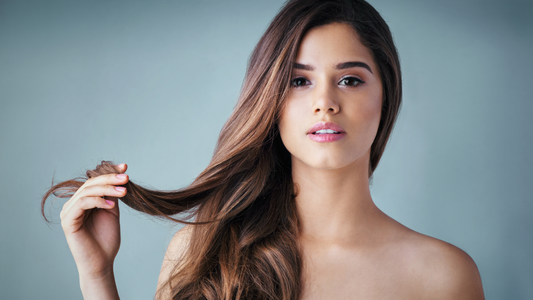For many people, achieving the perfect hair often involves a combination of color treatments and keratin treatments. Color adds vibrancy and dimension, while keratin treatments smooth frizz, enhance shine, and provide manageability. However, combining these two processes requires a careful approach to ensure the health and longevity of your hair.
In this article, we’ll dive into how to safely use keratin treatments on color-treated hair, what you need to know about maintaining hair health, and how Kera Mane Keratin Hair Treatment can give you the results you want without compromising the integrity of your hair.
The Relationship Between Keratin and Color-Treated Hair
Keratin treatments are designed to restore and strengthen the hair by infusing it with keratin protein. This process smooths the hair shaft, reduces frizz, and makes styling more manageable. However, if your hair is color-treated, it’s important to understand how keratin treatments may affect your color and what precautions you should take to maintain both the color vibrancy and the health of your hair.
Potential Concerns:
- Color Fading: One of the biggest concerns is that keratin treatments, particularly those involving high heat, can cause color to fade faster, especially if applied soon after coloring.
- Dryness or Damage: Color-treated hair is already more vulnerable to dryness and damage due to the chemicals used in the coloring process. If a keratin treatment is not applied correctly, it may exacerbate these issues.
- Balancing Protein and Moisture: Keratin treatments infuse protein into the hair, which is necessary for strength, but too much protein can make hair brittle if it’s not balanced with proper hydration, especially for color-treated hair that tends to need extra moisture.
How to Safely Use Keratin Treatments on Color-Treated Hair
To enjoy the benefits of both color and keratin treatments while maintaining healthy hair, here are some key considerations and steps to follow:
1. Timing Is Everything: When to Apply Keratin and Color Treatments
Before or After Coloring?
- Before Coloring: Ideally, you should apply the keratin treatment before coloring your hair. This strengthens the hair, providing a smooth base for the color application. The smoother hair shaft also allows for more even color distribution. Additionally, applying keratin before coloring prevents the treatment from stripping the color.
- After Coloring: If you prefer to get the keratin treatment after coloring your hair, make sure to wait at least two weeks after the color application. This waiting period gives your hair time to settle and helps avoid excessive fading or uneven results. Applying keratin too soon after coloring can dull the color or cause premature fading.
Kera Mane Recommendation: For the best results, apply Kera Mane Keratin Hair Treatment either before coloring or wait the recommended two weeks post-color to allow your hair to adjust and lock in its vibrancy.
2. Choosing the Right Keratin Treatment for Color-Treated Hair
Not all keratin treatments are created equal, and some formulas can be harsh on colored hair. It’s important to choose a formaldehyde-free, gentle formula that nourishes the hair without stripping or dulling color. Harsh chemicals, like formaldehyde or sulfates, can weaken the hair and cause color to fade prematurely.
Kera Mane Keratin Hair Treatment:
- Formaldehyde-Free: Kera Mane’s formula is free from harmful chemicals like formaldehyde, ensuring that your hair stays strong and healthy without compromising color.
- Plant-Based Keratin: This treatment uses plant-based keratin and natural oils like argan and coconut oil, which not only smooth but also nourish and protect colored hair.
- Color-Safe Ingredients: The gentle, color-safe ingredients in Kera Mane help preserve the vibrancy of your hair color while delivering long-lasting smoothness.
3. Heat Control: Protecting Your Color During the Treatment
Keratin treatments often involve using a flat iron to seal the treatment into the hair shaft, but color-treated hair can be more sensitive to heat. Excessive heat can cause your color to fade or, in some cases, damage already weakened strands.
How to Use Heat Safely:
- Lower the Temperature: If your hair is color-treated, opt for a lower temperature setting on your flat iron—typically 300-350°F—to minimize heat exposure while still effectively sealing the keratin treatment.
- Distribute Heat Evenly: Avoid passing the flat iron over the same section of hair too many times. Pass through slowly and steadily, and limit each section to 2-3 passes to avoid excess heat damage.
Kera Mane’s Approach: Kera Mane Keratin Hair Treatment includes clear instructions for adjusting heat levels based on your hair type. For color-treated hair, it’s especially important to follow these guidelines to protect both your color and the health of your hair.
4. Post-Treatment Care: How to Maintain Your Color and Keratin
Aftercare is crucial for maintaining the results of both your color and keratin treatments. The products you use after treatment can either help prolong your results or lead to faster fading and dryness.
Sulfate-Free Shampoos and Conditioners:
- Sulfates can strip both your color and keratin, leading to dryness and faster fading. It’s essential to use sulfate-free shampoos and conditioners specifically formulated for color-treated hair to keep your hair hydrated and vibrant.
Hydration and Nourishment:
- Deep Conditioning: Color-treated hair needs extra moisture. Use a deep conditioning mask weekly to restore hydration, especially after a keratin treatment, which can sometimes dry out already-processed hair.
- Natural Oils: Incorporating oils like argan oil or coconut oil into your hair care routine can help lock in moisture and prevent frizz, keeping both your keratin treatment and color looking their best.
Kera Mane’s Recommended Aftercare: Kera Mane’s sulfate-free, hydrating formula is designed to maintain both smoothness and color vibrancy. By pairing the treatment with sulfate-free products and nourishing hair masks, you can extend the life of both your keratin and color treatments.
5. Maintaining Balance Between Protein and Moisture
Color-treated hair often needs extra moisture to counteract the dryness caused by chemical processing. Keratin treatments, on the other hand, focus on replenishing the hair’s protein, which is essential for strength. However, too much protein without enough moisture can lead to brittle, dry hair.
How to Maintain the Balance:
- Alternate Treatments: After your keratin treatment, make sure to include moisturizing treatments in your routine, such as leave-in conditioners or hydrating hair masks. Balance protein-rich treatments with moisture-rich products to avoid overloading your hair with protein.
- Listen to Your Hair: If your hair feels stiff or brittle after a keratin treatment, it may be a sign of protein overload. Introduce more moisture into your routine to rebalance your hair’s needs.
Kera Mane’s Balanced Formula: Kera Mane’s plant-based keratin formula is already balanced with natural oils and hydrating ingredients, providing both strength and moisture to prevent protein overload and keep your hair soft and smooth.
Key Considerations for Safely Using Keratin on Color-Treated Hair
- Wait Before Applying Keratin: Apply keratin before coloring or wait at least 2 weeks after coloring to avoid color fading.
- Use Formaldehyde-Free Treatments: Choose treatments like Kera Mane that are free from harsh chemicals, ensuring your hair remains healthy and your color vibrant.
- Mind the Heat: Use lower heat settings during the treatment process to protect your color-treated hair from heat damage.
- Sulfate-Free Aftercare: Use sulfate-free shampoos, conditioners, and deep conditioning treatments to preserve the results of both your color and keratin treatment.
- Moisturize Regularly: Color-treated hair needs extra hydration. Make sure to incorporate moisturizing masks and leave-in conditioners to keep your hair healthy and prevent dryness.
Conclusion
Keratin treatments can be a great way to smooth and manage color-treated hair, but it’s important to take extra care when combining these processes. By timing your treatments properly, choosing the right products, and following aftercare guidelines, you can enjoy the benefits of both vibrant color and smooth, healthy hair.
Kera Mane Keratin Hair Treatment is specially formulated to be safe for color-treated hair, offering a gentle, formaldehyde-free solution that smooths and strengthens while protecting your color. By following the tips and considerations outlined in this article, you can safely achieve salon-worthy results at home without compromising the health of your hair.




